Drone attacks in Saudi Arabia put world’s oil supply at risk
New satellite images from the full extent of the damage caused by a drone attack on the world’s biggest oil facility, as the Australia prepares for fallout at the bowser and US President Donald Trump prepares to retaliate.
World
Don't miss out on the headlines from World. Followed categories will be added to My News.
Donald Trump says the United States is “locked and loaded” to retaliate after a wave of drone attacks on the world’s largest oil processing facility in Saudi Arabia, which has sparked fears for global oil supplies and fuel prices.
It comes as incredible new satellite images show the extent of the attacks.
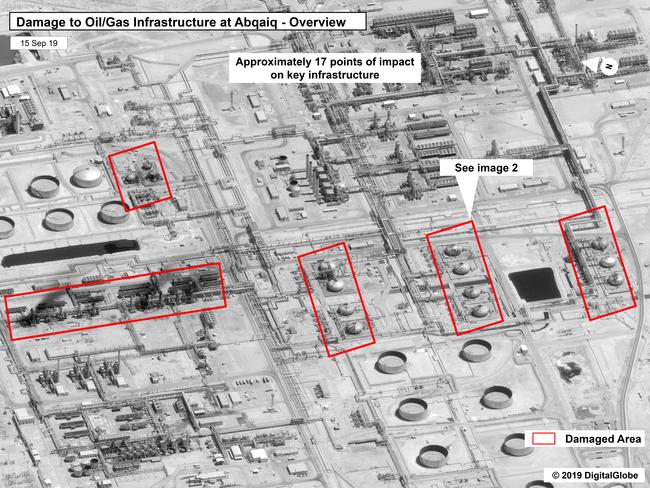
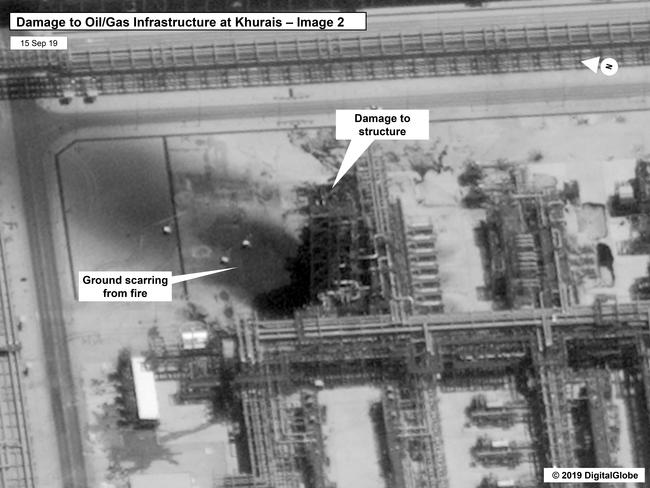
Australia's federal Energy Minister Angus Taylor today refused to comment on fears Australia’s petrol prices could spike in the aftermath.
The US issued the threat after taking extraordinary steps to prevent fuel price hikes in the US following the attack.
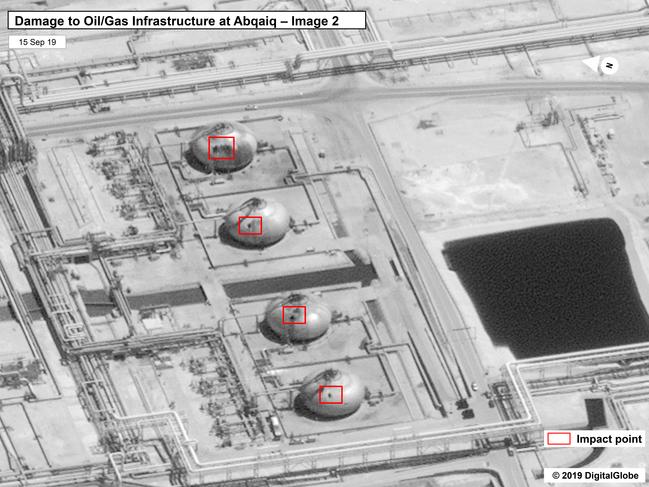
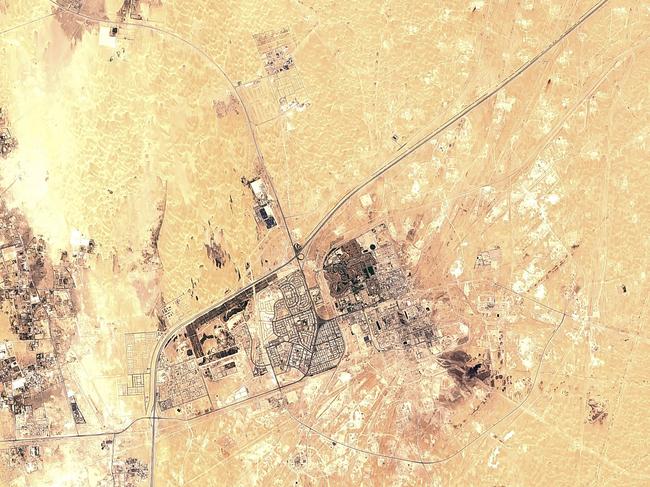
“Saudi Arabia oil supply was attacked. There is reason to believe that we know the culprit, are locked and loaded depending on verification, but are waiting to hear from the Kingdom as to who they believe was the cause of this attack, and under what terms we would proceed,” Mr Trump wrote.
Earlier, Energy Minister Angus Taylor refused to comment on the possibility Australia’s petrol prices could spike following the attack but said there was “no immediate threat” to the country’s supplies.
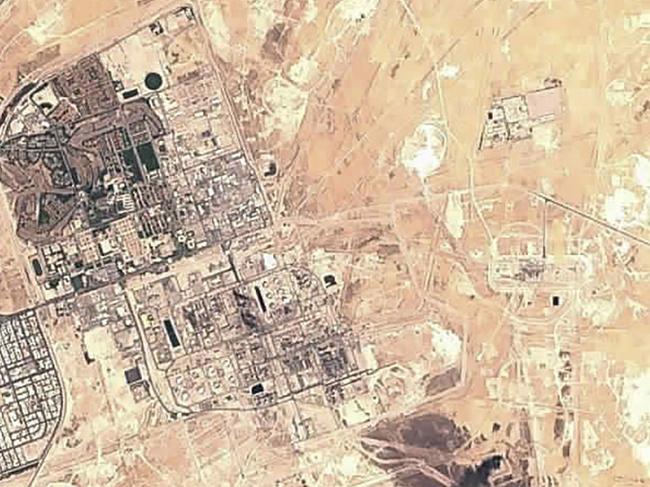
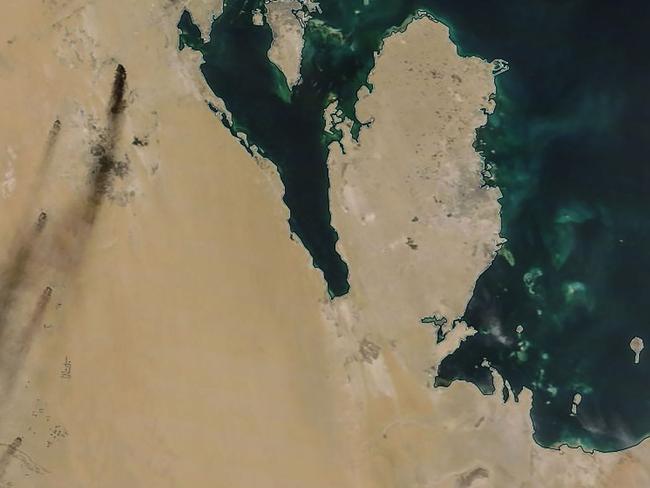
“The International Energy Agency tells us that there’s no immediate threat to our fuel supplies here in Australia,” he told ABC today, saying there were “ample commercial stocks globally”.
“They’re monitoring the situation, as we are,” Mr Taylor added.
President Trump has also taken extraordinary steps to prevent fuel price hikes in the US by authorising the release of oil from the US's strategic reserve.
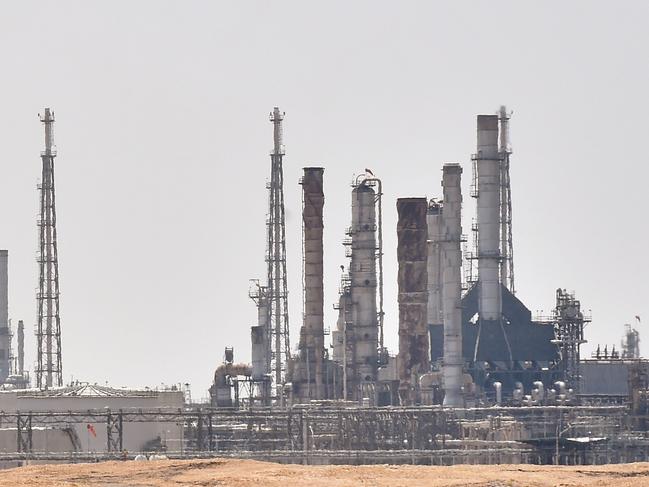
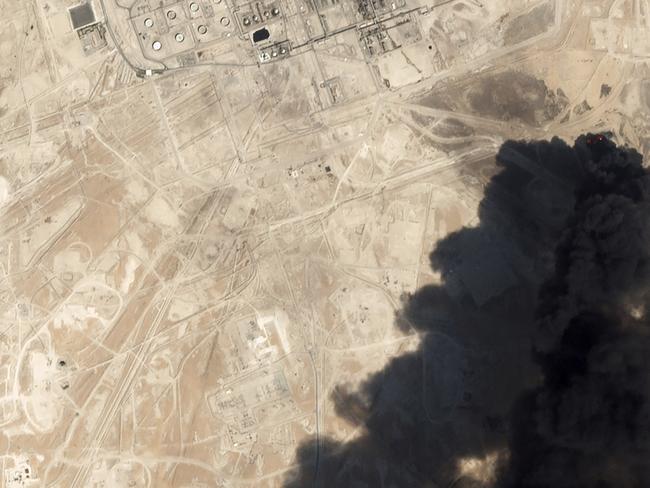
"Based on the attack on Saudi Arabia, which may have an impact on oil prices, I have authorised the release of oil from the Strategic Petroleum Reserve, if needed, in a to-be-determined amount sufficient to keep the markets well-supplied," Mr Trump tweeted.
He also ordered US agencies to expedite approvals for oil pipelines currently in the permitting process in Texas and various other States.
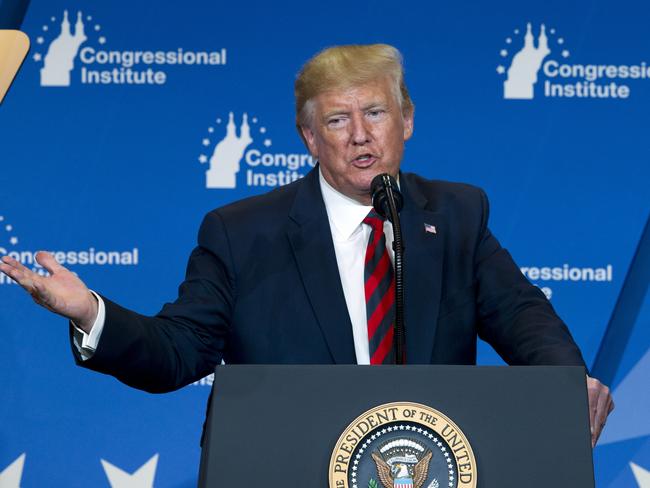
MORE NEWS:
Oil-rich Saudis suffer massive blow
What happens when Saudis run out of oil?
He refused to attribute the attack to Iran-backed Houthi rebels in Yemen, who have claimed responsibility, but condemned the violence.
Huge fires erupted after the early-morning attacks where at least 10 drones were used against the Abqaiq oil processing facility and the Khurais oilfield, prompting indefinite suspension of operations.
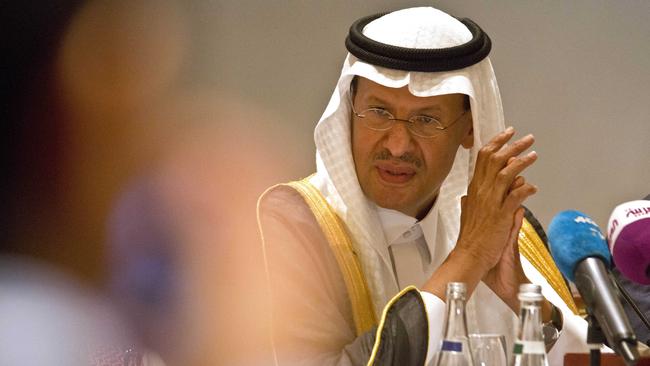
There have been no reports of injuries at either site, northeast of the Saudi capital, Riyadh.
Officials from the International Energy Agency (IEA), a 30-nation collective including Australia, were urgently assessing the extent of the disruption of global supplies as the US announced it could release oil reserves to ease expected panic demands and sharp rises in oil prices.
Saudi Arabia’s energy minister Prince Abdulaziz bin Salman Al Saud said explosions knocked out about 50 per cent production capacity and 5.7 million barrels a day of oil production were lost (about 6 per cent of global oil supply), and the supply of ethane and natural gas also was cut by about half.
While Saudi Arabia has also offered to release its oil reserves, which it holds in the kingdom as well as at sites in Egypt, Japan and the Netherlands, analysts have warned the shock attack was likely to have an immediate impact on supply and a rise in petrol prices.
An increase of $US10 a barrel is expected if a quick production turnaround cannot be achieved; but the oil market has warned the disruption of just a couple of days would lift prices regardless. The benchmark Brent crude currently trades at $US60 a barrel.
US Secretary of State Mike Pompeo blamed Iran for the drone strikes in a series of tweets.
“There is no evidence the attacks came from Yemen … Iran has now launched an unprecedented attack on the world’s energy supply,” he said.
“The United States will work with our partners and allies to ensure that energy markets remain well supplied and Iran is held accountable for its aggression.”
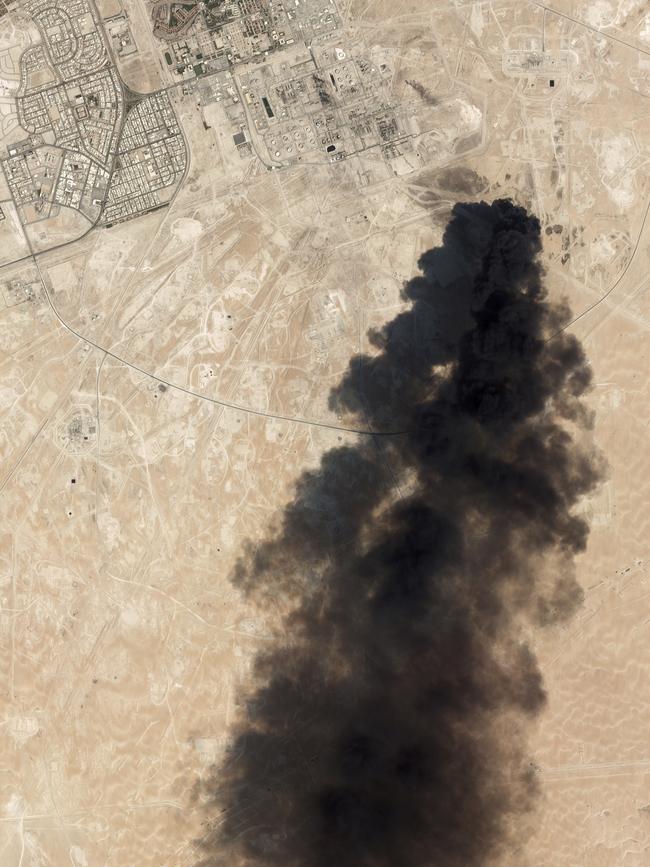
Iran-backed militias in Iraq have previously been responsible for targeting Saudi Arabia’s oil industry and the US suspects the latest strikes were launched from Iraq or Iran.
Iraq is denying that its country was the site from where Yemeni-rebel drones were launched to attack Saudi oil installations. Iraqi Prime Minister Adel Abdul-Mahdi’s office said today Iraq would act “decisively” if anyone tried to use its territory to attack other countries.
Meanwhile Iran’s Foreign Ministry has also dismissed the US accusation that it was behind an attack on Saudi Arabia’s oil infrastructure, calling it part of Washington’s policy of “maximum lies.”
Last month, Australia’s Prime Minister Scott Morrison announced he would be negotiating with the Trump administration to buy millions of barrels of oil from America’s tightly-guarded fuel reserve under an emergency strategy to lower the risk of Australia plunging into an economic and national security crisis.
Australia imports 90 per cent of its liquid fuels, but has only enough petrol and crude oil to last 28 days, well below the IEA obligation of three-month reserves for member nations.
Energy Minister Angus Taylor said at the time it would take between 20 and 40 days for oil reserves to be sent to Australia from the US.
Houthis, who hold Yemen’s capital Sanaa, have been engaged in a war against a Saudi-coalition to reinstate the internationally recognised Yemeni government since 2015.
The Houthis launched drone attacks targeting Saudi’s crucial East-West Pipeline in May and three months later again at the Shaybah oilfield. First it was off-the-shelf hobby drones, but then Iranian-made UAV-X drones with a 1500km range that can cost as little as $20,000 each.
